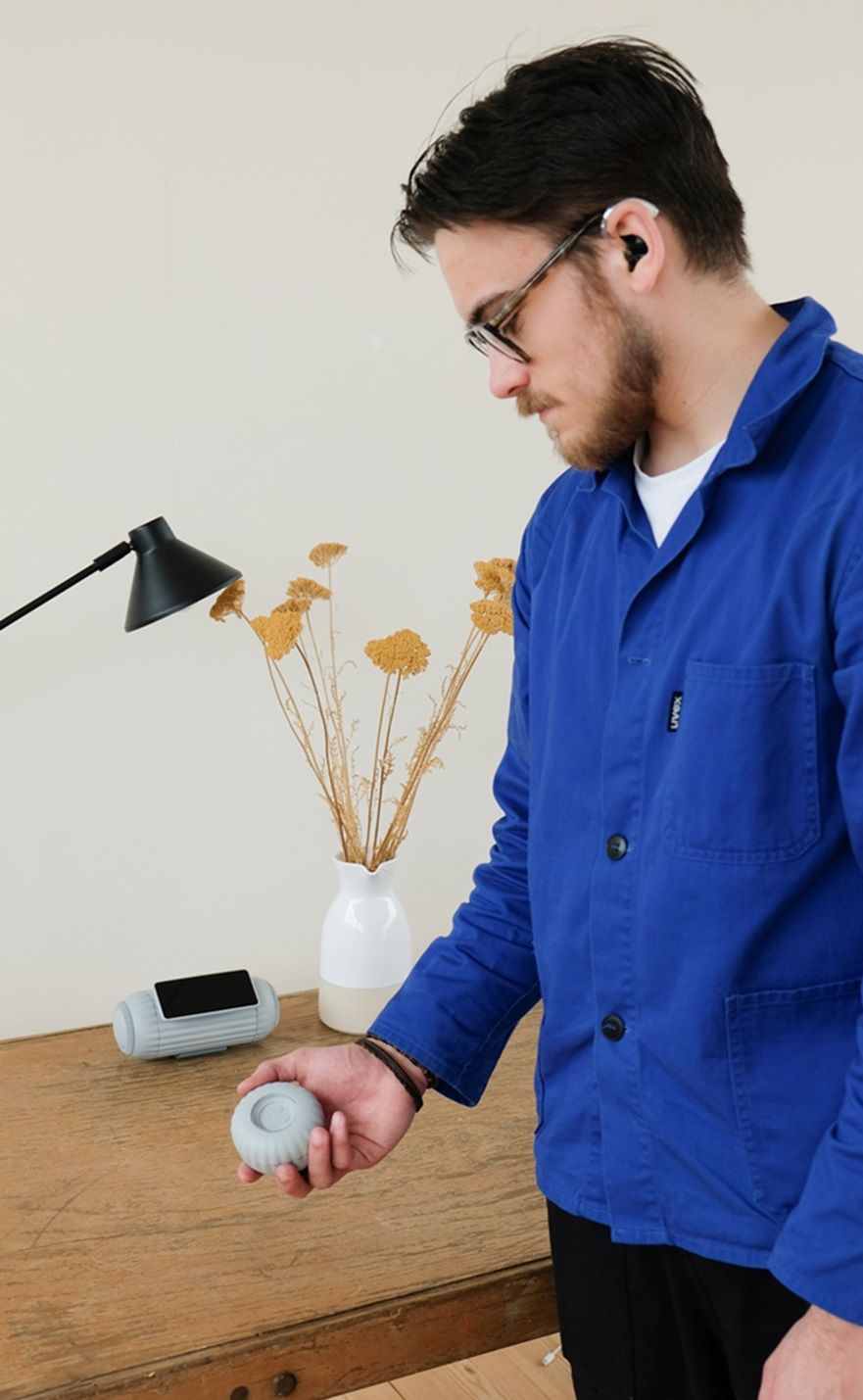Designer creates smart assistant device for Deaf and Hard of Hearing users
)
Sam Russell created ‘Janus’ to support people who encounter difficulties when interacting with voice recognition devices – which are increasingly becoming an integral part of everyday lives.
Janus not only provides a solution for Deaf users, but also improves the experience for hearing users, whilst addressing the aesthetic and affordability issues observed in products on sale for the Deaf and Hard of Hearing.
The result is a smart speaker that would not look out of place in a modern home, with accessibility features up-front such as a written transcript of the request and the answer, as well as visual light indicators confirming the request has been received. To enhance usability further, a camera system, aided by artificial intelligence, has been incorporated to allow for sign language input, recognition and translation to written transcription.
Sam’s design featured in the 2024 Nottingham Trent University (NTU) Student Showcase at the end of May. The Showcase is one of the UK’s largest displays of graduating art and design talent with hundreds of student projects going on public display. Following this, Sam’s work has been selected to be shown at the New Designers Exhibition, an annual London showcase of the UK’s most innovative emerging design talent, at the Business Design Centre in Islington from 3rd – 7th July.

“It is astounding that a product that is used by millions across the world cannot be used properly by a huge proportion of the population,” said Sam, who has just completed his studies in BSc Product Design in the School of Architecture, Design and the Built Environment.
“One of the main flaws of smart assistant devices such as Alexa is that the speech recognition technology is so limited. Research has shown that accuracy rates drop significantly for ethnic minorities and people with non-standard accents. They struggle to make themselves understood.
“Not only that, for people in the Deaf and Hard of Hearing communities, they are unaware if their request has been heard properly, as traditional smart speakers don’t tend to give a visual representation of the request. They have no idea, for example, if Alexa did indeed set a timer for 10 minutes, because the technology is not there to provide a visual confirmation.
“In fact, having visual feedback as standard makes the user experience so much better for all users, so it’s a win-win for everyone.”
During this project, Sam also demonstrated that developing a product with additional accessibility features does not have to cost the earth or look out of place compared to widely produced smart speakers. He believes that Janus could be sold with a £112 price tag.
“One of the main objectives of this project was not only to produce a design that could work, but to highlight the fact that the technology exists to produce products like this on an affordable scale that look great too. Traditionally, technology designed to be used by those with disabilities comes with a price tag that is out of reach for the majority of people and still looks like it was invented in the 1970s. I have shown with the development of this product that this doesn’t have to be the case.”
Sam has produced a proof of concept and has received positive feedback from both hearing and deaf users, who said they'd be interested in purchasing a smart assistant like this. He also aims to work on a feature which would allow different types of sign language to be recognised by the device, through the use of an under-display camera and artificial intelligence.
For now, though, Sam is keen to progress his career as a designer after graduation.
Richard Malcolm, Senior Lecturer in Product Design at NTU, said: “Sam has designed a product based on his own lived experience as a Deaf person. However, it has also highlighted potential limitations of a product that is used by millions of people, bringing the importance of essential accessibility features to the forefront.
“The project also demonstrates the need for accessibility features to be considered at the outset of the design and development process rather than adding them at a later date. By adopting this approach, Sam has created a more inclusive product with clear benefits and appeal for Deaf and hearing users alike, without compromising aesthetics or user experience”.


